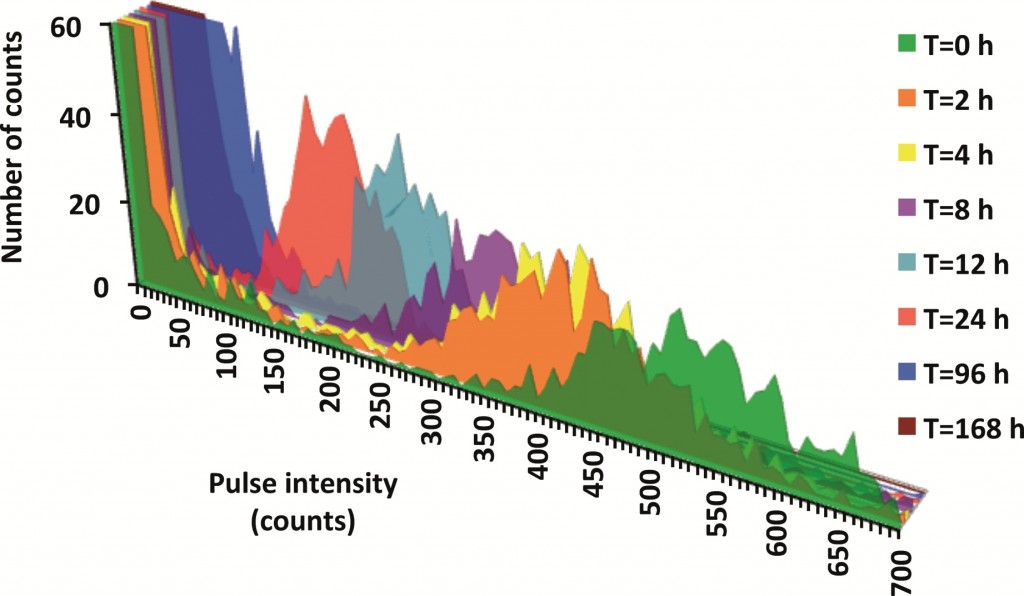A constant critique of numerous research conducted on the fate and transformation of nanoparticles has been the inability to reach concentrations that are environmentally relevant. Finally, this problem seems to have reached the end of the tunnel. Single particle ICP-MS (spICP-MS) has come to the rescue with the potential of detection and characterization of trace level engineered nanoparticles (ENPs) in complex matrices. Not only that, the analysis is even possible in the presence of known sinks for ENPs such as dissolved organic carbon (DOC), sediments and biota. This is because the measurement is of the primary particle size instead of increasing dissolved ions in the solution.
D.M. Mitrano and the colleagues from Colarado School of Mines, USA explicitly demonstrate this measurement of particle size in their analysis of Ag ENPs dissolution in different matrices using spICP-MS. The study considers two different sized Ag ENPs; 60 and 100 nm with three different polymer coatings: citrate (CA), tannic acid (TA) and polyvinylpyrrolidone (PVP) at predicted environmentally relevant concentrations (ng/L range). Figure 1, taken from their paper, represents the decrease in the pulse intensity over time as the dissolution of 100nm TA@Ag ENPs at 50ng/L takes place.
Figure 1
This raw intensity data is then used in computing the respective particle sizes based on calibration with dissolved standards.
The effect of water chemistry parameters under these dilute concentrations are hence investigated by quantitative evaluation of the rate and extent of particle dissolution by the using solutions with increasing complexity; deionized water, tap water, surface water and moderately hard reconstituted water to mimic the realistic environmental matrices. Comparisons have also been made between the different polymer coatings.
To read the full article click the link below:
Tracking dissolution of silver nanoparticles at environmentally relevant concentrations in laboratory, natural and processed waters using single particle ICP-MS (spICP-MS)
Denise M Mitrano, James Ranville, Anthony Bednar, Karen Kazor, Amanda S Hering and Christopher Higgins
DOI: 10.1039/C3EN00108C











